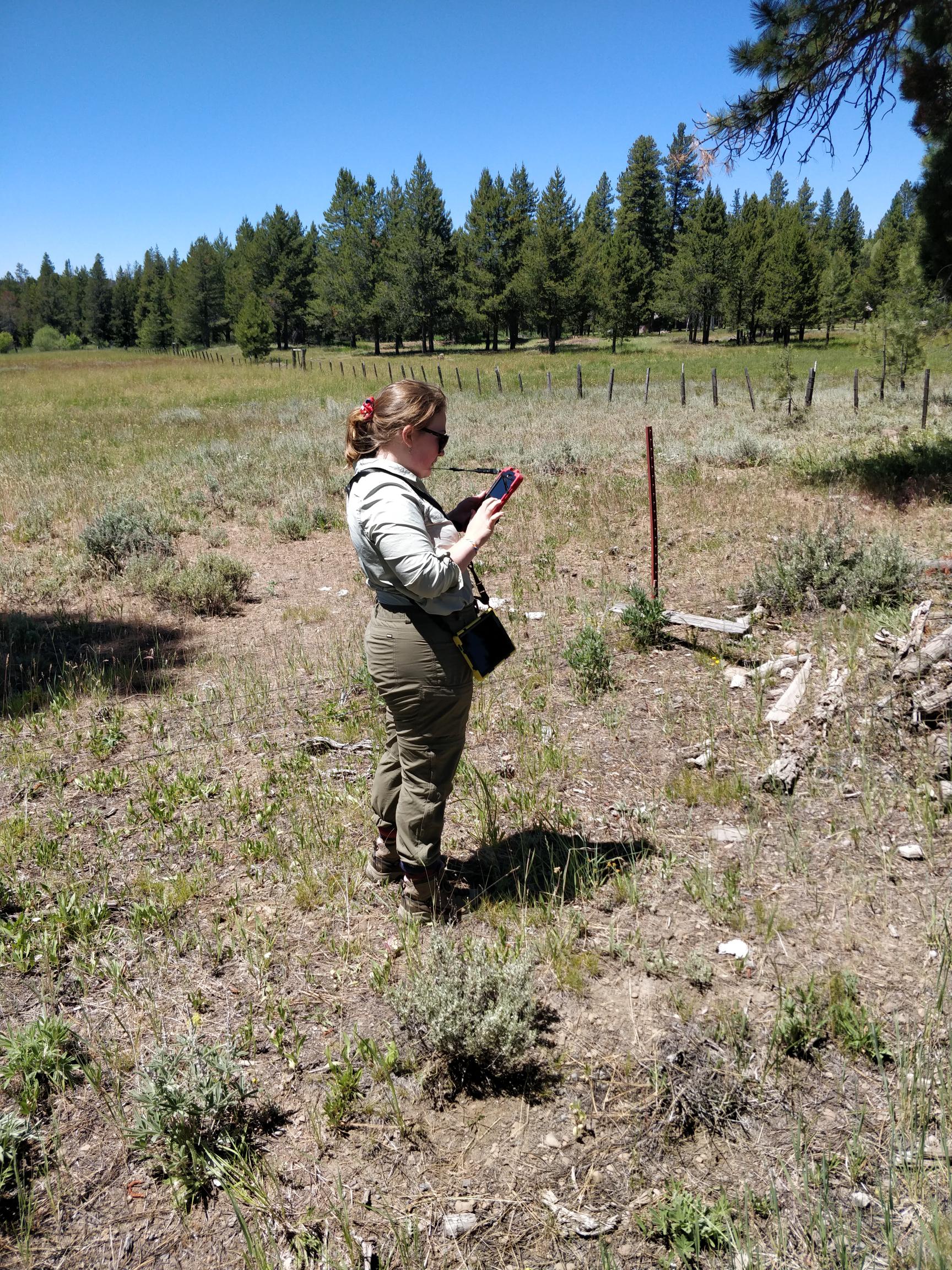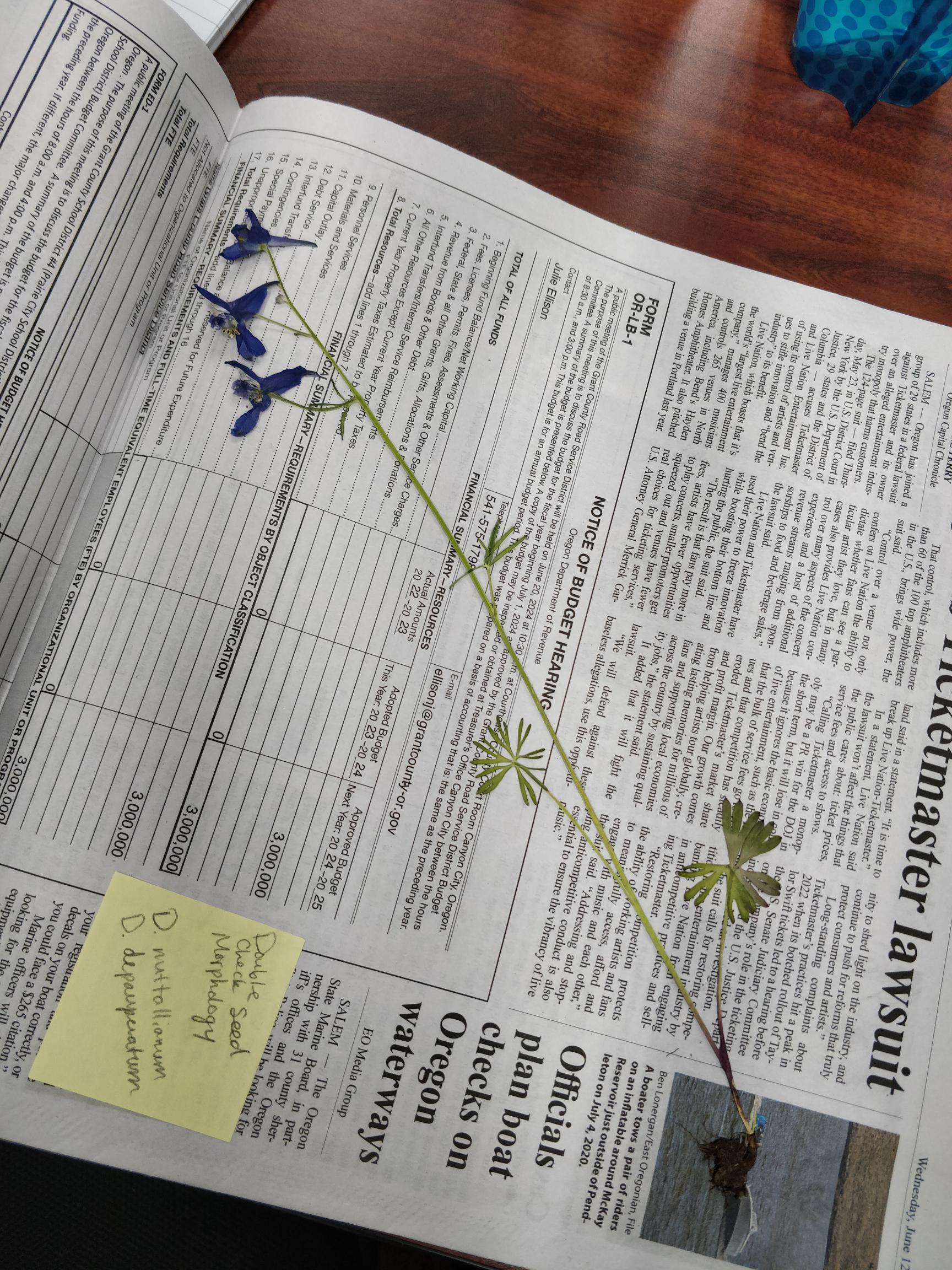
On day one, after a quick office tour and without any real sense of scale or direction in the Malheur National Forest, Emma and I hit the ground running. Immediately after being shown our desk, we got to work building out spreadsheets, setting up data maps, and desperately trying to plan the unplan-able.
At first, our list of target species seemed relatively puny – totally manageable. Now, it seems monstrous. How do just two people scout nearly 2 million acres?
Luckily, Emma and I work well together. We’ve fallen into a bit of a rhythm in the field: Emma is the iPad kid – a whiz at dropping points, measuring population extents, taking photos, and generally managing our data maps. Meanwhile, I’ve found myself spending most of my time rolling in the dirt, mumbling to myself about flowers, and managing our vouchers. It’s the perfect team!
One of our first big finds: a sprawling population of a fruiting Delphinium. Because of it’s widespread, yet pocketed nature, we opted to take multiple vouchers “just in case” . Of course, we knew they would be identical…


… unfortunately, the key had other plans.
Did you know that Delphinium nuttalianum and Delphinium depauperatum look nearly identical and often grow intermixed? Did you know the only surefire way to tell them apart is whether or not their seeds are “winged”? We didn’t!
We’re still not sure which species we’re working with (potentially both?). Unfortunately, I don’t take too kindly to being strung along. I want answers, and I want to be confident in them. I desperately searched field guides, online floras, and herbarium photos for more clues. Nothing.
Even now, after resigning myself to waiting for the seeds, I’m still thinking about those Delphinium, just in the back of my mind. Am I stressed about it? Not at all. But am I itching to check those seeds? Absolutely.
Here’s hoping they start seeding soon!
